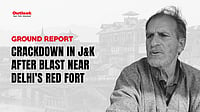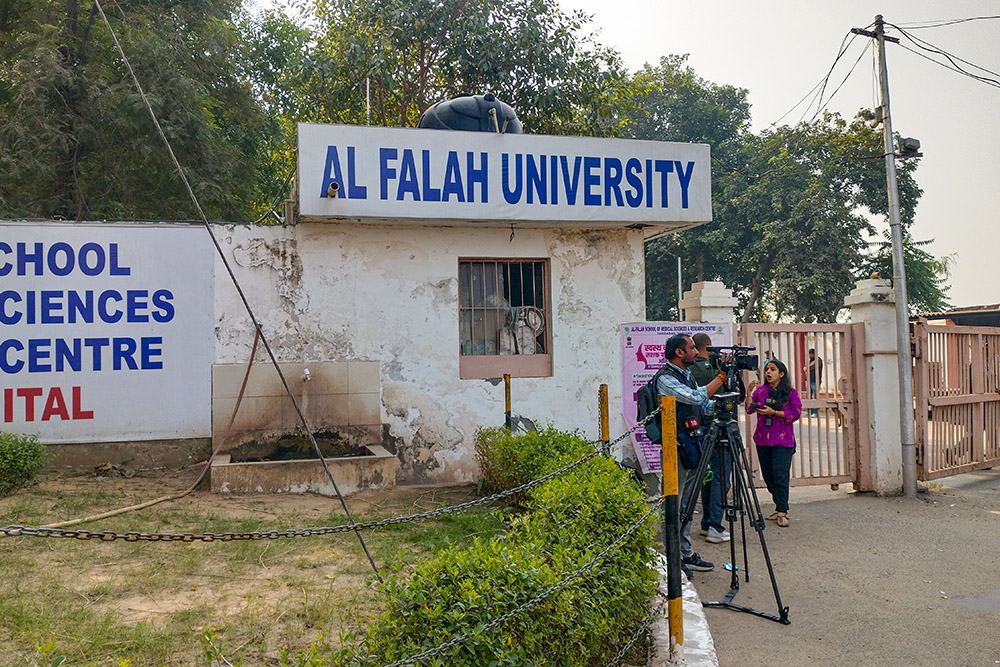The ongoing civil war between the 'People's Army' of Communist Party of Nepal(Maoist) and the government's security forces, took a violent turn immediatelyafter the end of the short-term ceasefire announced by the Maoistsfor the Dashain festival between October 20 and 28, 2004.
Within hours ofthe expiry of the temporary truce, the security forces and the Maoists clashedat Kamirechour in the Kavre Village Development Committee (VDC) of Dang districton October 29. On October 31, some 1,000 Maoists attacked Gamagdhi, MuguDistrict headquarters. The insurgents have also threatened, according to awidely reported statement by an unnamed 'Political Commissar', "to attackand destroy the mid-western regional headquarters Birendranagar in Surkhetdistrict."
The statement claimed, further, that, "the Gamagdhi attackwas an unplanned, small attack. Now we will show them by attacking Birendranagarand turning it into ashes." The Maoist threat against Birendranagar, one ofthe government's key strategic locations in the mid-western region, clearlydemonstrates the progress and direction of the 'protracted war' in Nepal.
The Maoist 'Chairman', Pushpa Kamal Dahal, aka, Prachanda, has made itclear that the armed confrontation with the state is the primary instrument ofthe 'People's War', and the movement has relied on popularMarxist-Leninist-Maoist slogans such as 'The People without an army have nothingof their own'; 'The main instrument of the state is the army'; 'In the NewDemocratic Revolution the main form of organization is the army and the mainform of struggle is the war'.
The Maoists objective is to transform the unarmedmasses into the armed masses, and little effort has been spared to this end overthe past years. The absence of parallel development and a sincere nationalleadership has made their task easier, pushing common folk, voluntarily or undercoercion, into the armed struggle, validating the revolutionary theory that warteaches war.
There has, over the past months, been a steady and strong evolution of theMaoist military strategy from rural and jungle-based guerilla warfare to agreater focus on urban targets, with a number of tactical attacks on variousdistrict headquarters, where the Security Forces are currently concentrated.More significantly, the Maoists appear to be hunkering down for a conventionalconfrontation, with reports that the insurgents have commenced extensiveconstruction of bunkers and tunnels, particularly in the mid-Western and Westerndistricts of Rukum and Achham respectively.
This fortification and 'tunnelwarfare' is expected to provide greater security to the Maoist cadres andleadership against increasingly sophisticated operations by the Royal NepaleseArmy (RNA) which has received a substantial bounty of improved weaponry, and hasbeen conducting offensive operations using modern weapons, armour and aircraftagainst the Maoists. At the same time, these fortifications can be expected toprovide the Maoists a more secure base to launch their own operations againsturban targets.
Current trends in Maoist activity, consequently, suggested that they see theirmovement as having reached the 'third stage' postulated by Mao's theory ofprotracted war - the strategic offensive (the two preceding stages are'strategic defense' and 'strategic equilibrium'). Indeed, the beginning of the'strategic offensive' phase had been announced by the CPN-M after 10 days of the'Central Committee' meeting at an undisclosed location on August 31, 2004.
Thepush forward is motivated by the conviction that other revolutionary movementssuch as "the Shining Path and the Colombian revolutions failed because theylet the strategic balance drag on for too long. In Nepal, the Maoists think aquick push when the state is vulnerable will take them to victory." Itappears that the Maoists now seek the 'decisive destruction of the enemy's armedforces' and the seizure of power.
The Maoists have been long in their preparation, building rural base areas andestablishing military control and political authority in ever-increasing partsof the countryside, to surround the cities. Apart from the abductions andcoercive recruitment, largely among young rural students, the Maoists havedesigned curricula for primary school students (4th and 5th Grade) in the nameof 'pro-people education'. The curricula include subjects such as militaryscience, Maoist philosophy and ideology, profiles of Maoist leaders, and historyand politics of the People's War.
To increase the pressure on the government, the Maoists have extensivelytargeted the political and economic structure across the country withdevastating attacks on power plants, bridges, telecommunication centers and governmentbuildings, which have caused immense damages to the national economy.Since the end of the temporary cease fire on October 29, there have been atleast 30 incidents of Maoist violence across the country, and the Maoists havedetonated bombs in all their attacks, including those at Gamagdhi in Mugu, Humla,Jajarkot, Dolpa, Bardia, Palpa, Rukum and in the mid-Marsyangdhi power plantproject area.
According to a study conducted towards the end of 2003, theseven-year long Maoist insurgency has cost the nation Rs. 66 billion, withtourism being the worst hit sector of the economy incurring a loss of Rs. 5.9billion during 2002-03. Subsequently, the slump in tourism sector had aspillover effect on the banking and hotel industry, and ultimately on allproductive activities. Security expenditure has increased by almost 300 per centover the last five years of the civil war. The cost of destruction of physicalinfrastructure, such as power stations, telephone towers and VDC buildings bythe Maoists was estimated at Rs. 18 billion.
In general, the overall businessenvironment has deteriorated drastically as a result of Maoist violence. Theinsurgents have also been intensifying their activities in the districtssurrounding the Kathmandu Valley, simultaneously putting pressure on the capitalcity itself with well-targeted bombings, abductions, strikes and economicblockades. The buildings of more than three-fourths of the 3,915 VDCs in thecountry have already been totally destroyed by the Maoists, either duringattacks or in bombing incidents. Almost all the remaining VDCs are vulnerable totheir attacks.
Significantly, the Maoists are now claiming the lion's share from the moneyallocated to VDCs for development works. Various Non-governmental Organisations(NGOs) and international NGOs, moreover, have been forced to recognize theMaoist 'People's governments' in their areas of domination, and can only workafter procuring or securing the Maoists' permission to continue theirdevelopmental projects. NGOs, along with local businessmen, government employeesand common civilians, are now routinely paying 'revolutionary taxes' to theMaoists in much of the country, even as the countryside witnesses an incredibleexodus from the rural areas, with an estimated over two million villagersfleeing their homes over the last two years.
These distress migrants are mostlyyoung men and women who have streamed out of the hills into the Indian Teraiplain to the south, or into the District headquarters and cities within Nepal.Observers estimate that the migration continues at a rate of about 75,000persons each month.
On the flip side, an offensive strategy for the Nepalese security forces alsoappears to be crystallizing. The Royal Nepalese Army (RNA) has rejected theproposal for a unilateral ceasefire from the government side, and continued itspatrolling activities even during the Dashain temporary ceasefire period.In mid-October the RNA had carried out a week-long and massive militaryoperation, 'Operation Lekbesi', against Maoist training camps in Myagdi, Baglung,Gulmi and Arghakhanchi districts, to flush out the Maoists from their strongholdareas, and had set up a 'tactical headquarters' at the Upallochour barracks tocoordinate their operations.
At the same time, the Army had conducted 'OperationSimarekha' in the Rukum, Dolpa and Pyuthan areas and in the Accham District,establishing significant presence in these areas of Maoist domination. The ArmedPolice Force (APF) of Nepal, which has been working under 'operationalinstructions' of the RNA, is also expected to form a brigade for the security ofKathmandu, and to establish a battalion in each of the 75 districts in thecountry.
Despite some successes for the RNA, however, there is little evidence, or evenpossibility of the political re-consolidation of the country, and of therestoration of the institutions of civil governance in the vast areas that havebeen lost to the disorders. Indeed, as Kathmandu almost exclusively andalternately emphasizes either talks or military operations, there appears to beno will or motivation to restore the structures and activities of normal civilgovernance in rural areas, and the entire administrative paraphernalia has beenwithdrawn into the District Headquarters across the country.
On the political front, Prime Minister Sher Bahadur Deuba's government hadclearly specified that the government would hold a national election, even ifthe Maoists did not join in a negotiation process, though the feasibility of anelection in prevailing circumstances is highly suspect.
The Maoists, in anofficial statement, have further claimed to have initiated processes to 'holddialogue' with all political parties and organizations 'other than the royalpalace and India', to find a way out of the country's current political impasse,and to preclude the possibility of 'foreign intervention'. If anything, thismove will only further isolate the incumbent regime. The prime power in theconflict, King Gyanendra, is yet to make public his stand on the future of hiscountry, and Nepal can only anticipate a further deterioration in the situation,as the warring groups rely increasingly on the 'military option'.
P.G. Rajamohan isResearch Associate, Institute for Conflict Management. Courtesy, the South AsiaIntelligence Review of the South Asia Terrorism Portal






















